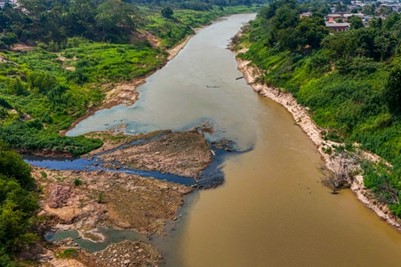
Severe Drought Returns to the Amazon, Earlier Than Expected
Several rivers in the southwestern Amazon are experiencing record-low water levels for this time of year.
Holding one-fifth of the world's fresh water, the Amazon is starting the dry season with many rivers already at critically low levels. This situation is prompting governments to implement contingency measures to address disruptions in navigation and the increasing risk of forest fires.
"The Amazon Basin is facing one of the most severe droughts in recent years in 2024, with significant impacts on several member countries," stated a technical note issued Wednesday by the Amazon Cooperation Treaty Organization (ACTO), which includes Bolivia, Brazil, Colombia, Ecuador, Guyana, Peru, Suriname, and Venezuela.
Water levels in several rivers in the southwestern Amazon are the lowest on record for this time of year. Historically, the driest months are August and September, coinciding with peak fire and deforestation activity. So far, Bolivia, Peru, and Brazil are the most affected countries, according to ACTO.
On Monday, Brazil's federal water agency declared a water shortage in two major basins, Madeira and Purus, covering an area nearly the size of Mexico. The following day, Acre state declared an emergency due to an impending water shortage in its main city. In June, the neighboring Amazonas state took similar measures in 20 of its 62 municipalities, which are mostly accessed by water or air, even under normal conditions.
These measures were implemented more than two months earlier than in 2023, when the Amazon basin experienced its worst drought on record, resulting in the deaths of dozens of river dolphins, months of smoke choking cities, and isolating thousands who relied on water transportation. The steps are taken to increase monitoring, mobilize resources and personnel, and request federal aid.
The depth of the Madeira River, one of the largest Amazon tributaries and a crucial waterway for soybeans and fuel, dropped below 3 meters (10 feet) near Porto Velho on July 20. In 2023, this occurred on August 15. Navigation has been restricted during nighttime, and two of Brazil's largest hydroelectric plants may halt production, as they did last year.
In the Amazonas town of Envira, nearby rivers have become too shallow for navigation. Local officials have advised elders and pregnant women to relocate to the city center due to potential medical access issues. Farmers producing cassava flour are unable to transport it to market, causing the price of this Amazon staple to more than double, according to the local administration.
Another significant concern is fire. From January until late July, there were approximately 25,000 fires — the highest number for this period in nearly two decades. In the Amazon, fires are predominantly human-made, used to manage pastures and clear deforested areas.
In Acre, the drought has already led to water supply shortages in several areas of its capital, Rio Branco. These communities now rely on trucked-in water, a problem that arose the previous year. Between the two droughts, severe flooding affected 19 of the state's 22 municipalities.
"It's been two years in a row of extreme events," Julie Messias, Acre's secretary of environment, told The Associated Press. "The result is that we are facing a threat of food shortage. First, the crops were flooded, and now the planting period is very dry."